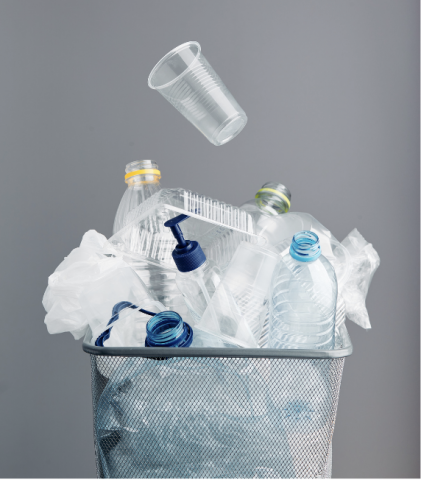The Impact of Plastic Production

There are always problems rising across different industries while new solutions are simultaneously being uncovered. The possibilities for a better world are always present, but it takes an investment of time, effort, and attention to detail for those possibilities to become realities. It doesn’t take much to observe a process that produces the same consistent results without thinking twice about it. Predictability can be positive, but if something has always been the same, then chances are that process is becoming stagnant. Being stagnant is not positive, and at some point a stagnant process has negative impacts.
As a society we should be progressing and growing. The possibility of change being so prevalent makes it unlikely for industry to stay the same. An example of this is the dental industry. Ancient cultures developed methods for brushing teeth, but as they continued industrializing, production of materials increased and new inventions surfaced. In 1938, the first nylon thistle toothbrush entered the US market. For hundreds of years this invention continued seeing innovation, and positive health benefits came as a result. Over time, more dental hygiene data got collected and other health variables like gum disease began revealing themselves. Along with these health variables came further inventions like dental floss and the electric toothbrush. Today, there are all kinds of different dental products on the market that have been engineered to refine dental hygiene. As a result, people are experiencing better oral health. The point is, when we invest time and pay attention, problems become evident and solutions get discovered.
Suction Canisters
There have been many industry specific products designed over the years. Another example is the suction canister used in hospitals to collect bodily secretions. This mechanism is highly effective in hospitals, especially considering the large emphasis on sanitation and disease contraction in recent years. Suction canisters are useful because they create a senario where hospital workers can easily collect and dispose of a patient's bodily fluid in one simple step, while preventing the risk of infections. It seems effective, and produces consistent results, so why bother with any changes to this process?
Suction canisters are effective, but their production requires large volumes of plastic. The canisters possess thick plastic walls to withstand the pressure imposed on them by the surgical vacuum equipment. To make matters worse, they are usually disposed of after one use. That is a large amount of plastic being produced and disposed of at a rapid rate.
It is estimated that over 100 million of these plastic suction canisters with thick plastic walls are produced each year. The product itself serves an important purpose in hospital settings, yet the process contributes to the over disposal of plastic, which largely impacts the environment.
According to a new report released by Greenpeace USA, 380 million tons of plastic gets produced by US companies each year. The problem is the recycling rate of plastic that can actually be recycled by facilities. Companies are producing plastic that has a usage time of less than a minute before getting recycled, and that plastic doesn't end up getting truly recycled because it doesn’t meet the standards of facilities due the plastic's toxic chemicals and difficulty to categorize. It is becoming more difficult for companies to recycle plastic, and as a result excess amounts of plastic end up in landfills, oceans, farmland, and even our diets.
Design Department's Spherical Canister
Suction canisters are an example of a good product with a good purpose with unfortunate secondary issues unrelated to its intended use. Thankfully the designers of DDI were able to pick up on these details and design a spherical canister to be used as an alternative to the suction canister that directly impacts the plastic environmental crisis. The spherical canister serves every purpose of the suction canister but is designed in a way to withstand the pressure of suction machines without the need for the thick, plastic walls. The spherical canister requires half the amount plastic as its equal volume suction canister counterpart, which addresses the issue of over 100 million plastic canisters that are used, disposed of, and contributing to the overproduction of plastic ending up where it doesn’t belong.
Greenpeace suggests companies downsize their plastic production to address the issue. Because of the spherical canister, that issue is being addressed. The impact of less plastic production could bring not only the recycling industry, but other industries large savings due to a reduction in plastic production. Not only that, decreasing plastic production could save the lives of millions of marine animals, and even prevent cancer caused by toxic chemicals from improperly disposed plastic.
Paying attention to the world around us creates opportunities to make it better. That’s exactly what is happening at Design Department Inc. with projects like the spherical canister and many other examples. Take a look at our project portfolio to see for yourself, and reach out to us today if you are interested in creating innovative designs made for a large scale impact!
